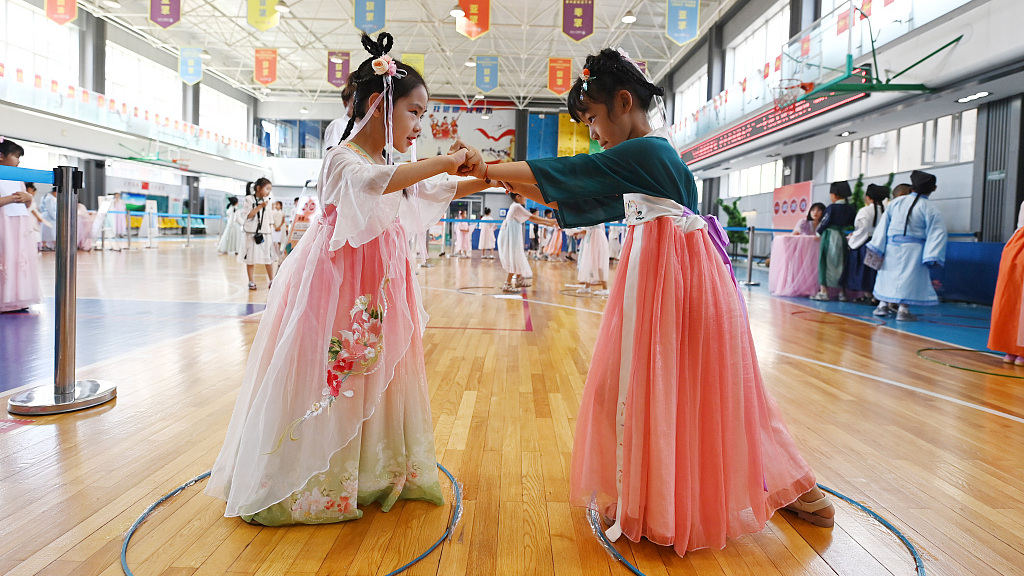The term "juedi" originates from the concept of "using horns to resist against others" and refers to a type of physical activity involving a two-person struggle, similar to modern wrestling or sumo. Originally, juedi was a combat skill, later evolving into a method for training soldiers, and eventually transforming into a folk sport with entertainment value.
The origins of juedi can be traced back to ancient times. Legend has it that warrior Chiyou equipped himself with horn-like protrusions on his head during battles, resembling the horns of a bull. In combat, he would use these head horns to resist opponents, making it difficult for enemies to defend themselves. This "using horns to resist against others" method later evolved into the two-person grappling activities we know as wrestling.

A photo taken on July 1, 2023 shows two pupils practicing juedi at a school in Changchun, Jilin Province. /CFP
A photo taken on July 1, 2023 shows two pupils practicing juedi at a school in Changchun, Jilin Province. /CFP
During the Qin (221-206 BC) and Han (206 BC-220 AD) dynasties, juedi activities were widespread, but by that time, juedi had transformed from a means of combat, into a game with a certain level of performance involved.
During the Jin Dynasty (265-420), another term, "xiangpu," appeared to describe this kind of activity. During the Tang Dynasty (618-907), both xiangpu and juedi were used interchangeably, and these activities were characterized by their competitive nature and were often practiced within the military.
After the Ming Dynasty(1368-1644), the term "shuaijiao" began to be used more frequently to describe these activities. At that time, people from all walks of life, both within and outside the imperial court, had a strong passion for "shuaijiao."
From juedi to xiangpu and then to shuaijiao, this millennia-old traditional form of physical combat within Chinese culture has a rich and colorful history. It stands as a unique and enduring component of China's traditional sports heritage.